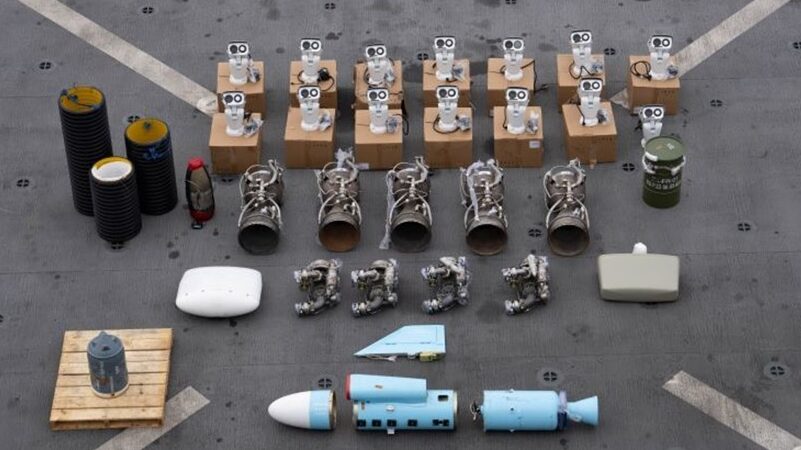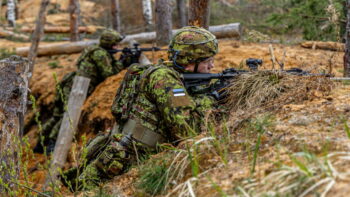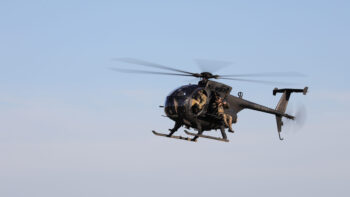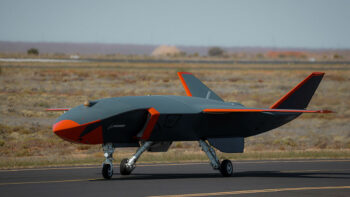
On Jan. 16, 2024, US Central Command revealed what it says are missile component parts bound for Houthi rebels in Yemen. (USCENTCOM via X)
BEIRUT — US Central Command today revealed that for the first time since Yemen-based Houthi began attacks on ships in the Red Sea in November, US forces seized “lethal, Iranian-supplied” arms heading to the militant group, including missile components. Two Navy SEALs, however, remain missing after the Jan. 11 operation.
“CENTCOM Navy forces conducted a night-time seizure of a dhow conducting illegal transport of advanced lethal aid from Iran to resupply Houthi forces in Yemen as part of the Houthis’ ongoing campaign of attacks against international merchant shipping,” CENTCOM said on X, formerly Twitter.
CENTCOM said the raid was conducted by Navy SEALs from USS Lewis B Puller, “supported by helicopters and unmanned aerial vehicles.” Two SEALs “directly involved” in the operation were “lost at sea,” and CENTCOM chief Gen. Michael Kurill said the Navy is “conducting an exhaustive search for your missing teammates.”
This seizure was conducted one day before US and UK launched air strikes on Houthi sites in Yemen in an effort to degrade the group’s ability to strike at targets in the Red Sea.
“Seized items include propulsion, guidance, and warheads for Houthi medium range ballistic missiles (MRBMs) and anti-ship cruise missiles (ASCMs), as well as air defense associated components. Initial analysis indicates these same weapons have been employed by the Houthis to threaten and attack innocent mariners on international merchant ships transiting in the Red Sea,” according to the CENTCOM statement.
Described by CENTCOM as the first seizure of advanced “Iranian-manufactured ballistic missile and cruise missile components since 2019”, the US said the dhow’s cargo showed direct violations of UN Security Resolution 2216 against transferring weapons to Houthi groups.
“It is clear that Iran continues shipment of advanced lethal aid to the Houthis. This is yet another example of how Iran actively sows instability throughout the region in direct violation of U.N. Security Resolution 2216 and international law,” Kurilla said. “We will continue to work with regional and international partners to expose and interdict these efforts, and ultimately to reestablish freedom of navigation.”
The US and UK strikes on Houthi infrastructure did not stem Houthi attacks. On January 15 the group struck US commercial ship Gibraltar Eagle with anti-ship ballistic missile. A day earlier, Houthis fired an anti-ship cruise missile toward US warship USS Laboon (DDG 58) operating in the Southern Red Sea, CENTCOM said.
“Iran has empowered and enabled these Houthi attacks in the maritime space,” Jonathan Lord, director of the Middle East security program at the Center for a New American Security told Breaking Defense. “Tehran has and continues to provide the Houthis the advanced weaponry and intelligence they need to attack ships in the Red Sea, the Bab Al Mandeb, the Gulf of Aden, the Strait of Hormuz, and even the Indian Ocean.”
He highlighted DoD’s earlier announcement that it bombed radar stations in Yemen that the Houthis used to track maritime traffic. “Those radars weren’t built in Sanaa,” Lord said, referring to the Yemeni capital. “Iran has created the Houthi threat that exists today.”
Iran has denied that it is involved in aiding the Houthi operations.
Ryan Bohl, a senior Middle East and North Africa analyst at the RANE Network, said he believed that while there is a chance that sustained interceptions and more US naval forces near Yemen “would eventually start to hamper the Houthis operational capabilities for sophisticated attacks on naval targets in the Red Sea and Gulf of Aden,” the strikes last week are unlikely to have done enough.
“The strikes were effective and establishing a new paradigm of risk for the Houthis showcasing that the US-led coalition will carry out military action to attempt to secure freedom of navigation in the Red Sea. But beyond that political dimension, it’s still unclear whether or not it caused enough damage to Houthi infrastructure to slow down or deter attacks,” he said. “It seems more likely that a sustained pace of intermittent attacks on Houthi infrastructure will eventually degrade their more sophisticated capabilities like drones and ballistic missiles, but will probably not halt all Houthis attacks.”
SOCOM tables amphibious MC-130J ambitions: Official
The command carried out steps like hydrostatic and wind tunnel tests, but are now “kind of hitting a pause” on implementing a water landing capability due to budget concerns.



























